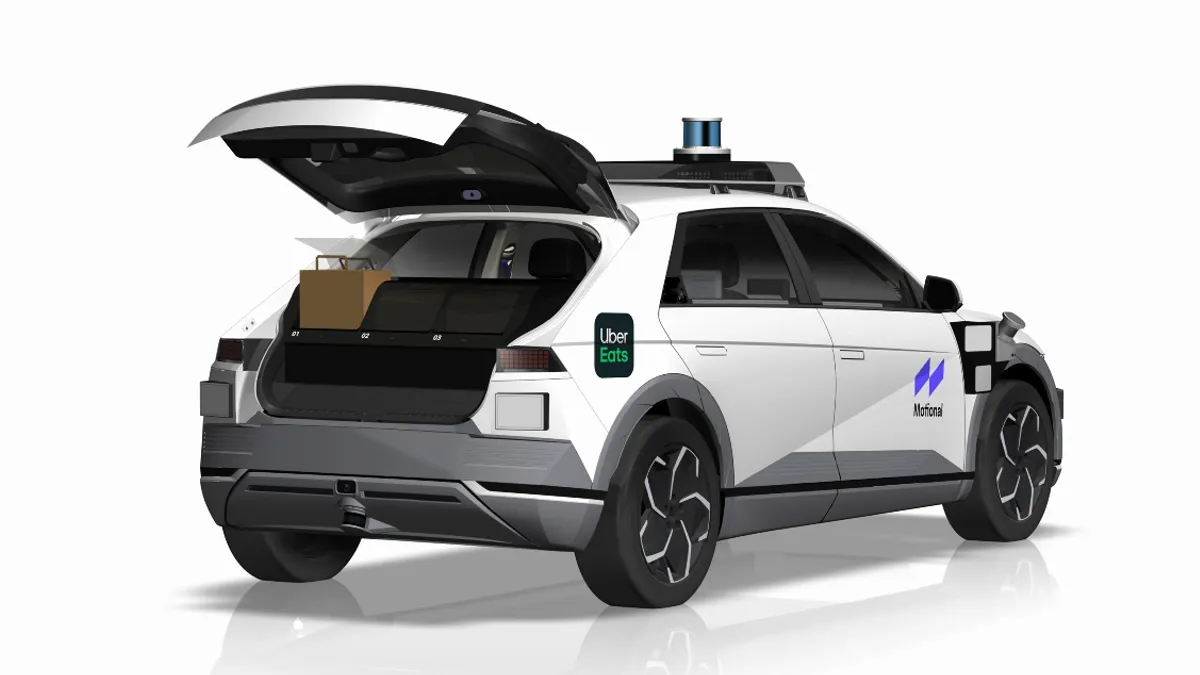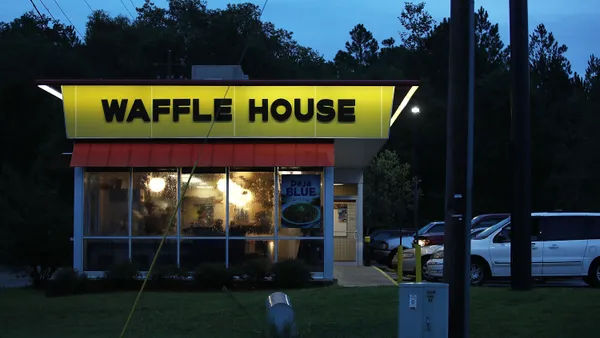Dive Brief:
- Uber and driverless technology company Motional will launch autonomous delivery for Uber customers in Santa Monica, California, early next year, according to a press release. This marks Uber's first delivery partnership with an autonomous vehicle provider.
- Motional's all-electric Hyundai IONIQ 5-based robotaxis will deliver curated meal kits from select restaurants on Uber Eats.
- The companies said it predicts autonomous delivery will play a pivotal role in the on-demand delivery ecosystem since it can increase access to more affordable and convenient deliveries.
Dive Insight:
Delivery providers have been at the forefront of autonomous delivery for several years. Uber Eats tested drone delivery in 2019 while DoorDash piloted autonomous vehicles the same year. Grubhub has also been working with Yandex to deliver meals to college students via bots this year.
Uber has also invested in robot delivery company Serve Robotics, which spun off from Postmates after the delivery company was acquired by Uber in 2020. Serve Robotics secured $13 million in seed funding in early December. Uber Eats will begin offering delivery via these robots in Los Angeles next year.
AVs and bots can expand the reach of short-distance delivery and make small orders more affordable for customers by avoiding the labor costs of a human courier. Kiwibots, for example, can deliver within 30 minutes and cost $1.99 compared to delivery and services fees that range from $3 to $8 for typical food delivery.
This method of delivery could make the channel more profitable for both aggregators and restaurants alike. Uber Eats reached profitability within its U.S. restaurant business during the third quarter and DoorDash's EBIDTA flipped to positive since the start of the pandemic. As dine-in traffic has returned, many restaurants are rethinking the profitability of delivery, and some operators are turning it off during busy times due to a lack of staffing. Some restaurants have increased pricing for items offered for delivery to help make up for the cost, so technology that makes delivery more affordable could also result in lower menu prices in the long run.














